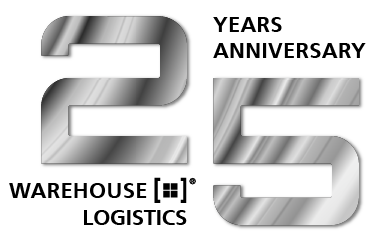News
Dynamic storage for increased warehouse capacity, pick and pack for consumption and cost minimisation
28.09.2015
Sigel GmbH in Mertingen, Bavaria, international manufacturers of office and desk accessories and producers of professional print and service supplies, have replaced their previous warehouse management system with CIM GmbH’s warehouse solution, PROLAG®World. The software handles around 2300 storage and retrieval transactions a day at the company’s two logistics sites. The switchover has allowed Sigel to reorganise and streamline their logistics processes.
The company now also profits from the easy upgradeability of the new system.
Founded in 1947 as a printworks, Sigel has expanded into a prestigious, high-quality brand with an international presence, employing a workforce of around 275 at their headquarters in Mertingen. Their diverse product and service range comprises two distinct business segments: Sigel “Business Products” sets new standards for exclusive, trendy and innovative office and desk accessories. Their portfolio under the “Printworks” label includes professional print and service supplies providing a wide range of goods and services, all of which meet the highest quality standards.
Two warehouses with a total of 9,000 pallet slots
With one warehouse at their headquarters in Mertingen and a second storage facility forty kilometres away in Augsburg, Sigel have a total of around 9,000 pallet slots including a modular shelving system and a block storage area. Before the changeover to PROLAG®World, the company used a fixed location storage system. CIM carried out a series of calculations and evaluations for Sigel to highlight the benefits of dynamic storage convincing them in the end to decide for a dynamic warehouse: dynamic storage (also known as chaotic or random storage) means that specific articles in the warehouse are no longer stored at fixed locations but are put into storage wherever there is a suitable free slot at the time. Based on size, weight and any other relevant characteristics, the software checks which storage location is most suitable for a specific article and proposes this location to the employee performing the storage operation. The system of dynamic storage uses free storage space more efficiently and enhances the capacity of the warehouse. Around 2,000 storage and retrieval transactions are made in Mertingen each day, with an average of 300 and 400 per day in Augsburg – predominantly full pallet transports.
Two sites, one system
The warehouse in Augsburg stores goods from both business segments, although products from the “Printworks” label are dispatched primarily from Augsburg and “Business Products” mainly from Mertingen. Because they have goods stored both in Mertingen and Augsburg, it is important for Sigel to manage both sites in one system for easy and effective handling of stock relocations between the two warehouses. This is facilitated by PROLAG®World’s site administration module, which can be used to reserve and pick goods for one customer order from both warehouses and thus deliver the goods from two sites.
Goods receipt and returns management
All goods, regardless of whether they are produced by Sigel or purchased from a supplier, are entered as normal at the identification point (I-point) and can be placed in storage with two simple scanning transactions. The relevant data for the I-point is transferred to PROLAG®World by the host system in a background transaction before the goods data is entered. Based on a number of different criteria, PROLAG®World looks for the optimal storage location in the warehouse. Returns are also recorded at goods receipt. Returned goods are put straight back into storage as unscheduled goods receipts, and the host system is notified of the receipt.
Pick and pack / Multi-order picking
Pick and pack and multi-order picking are used to pick goods in the warehouse. In other words, the articles are picked and packed into the relevant shipping cartons all in one transaction. Based on the weight and dimensions of an article, the software decides which shipping carton should be used for a specific picking order. This is a major time saver since the goods no longer have to be removed from the picking container and repacked into the shipping carton. Multi-order picking is the process of pooling homogeneous orders (identical articles for different customers) in one picking run, allowing faster and more efficient picking. Another special feature of the picking process is that the system takes account of any restrictions that apply to specific pickers, such as the maximum weight a person is allowed to lift or if a specific qualification is required to pick certain articles. These specifications can be made in the WMS as a basis for allocating orders to pickers.
